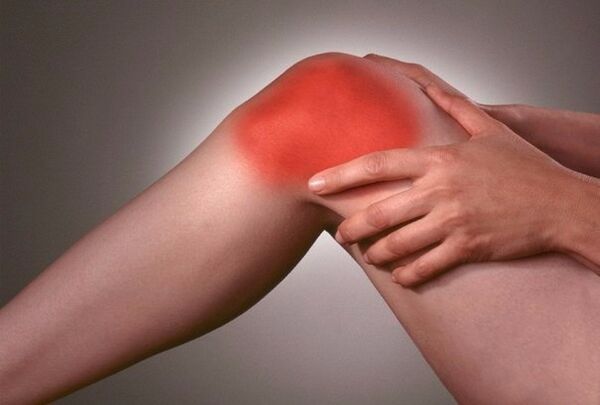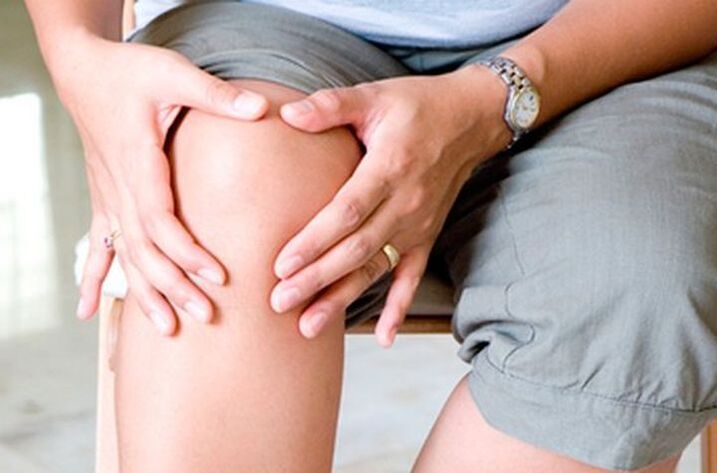
Arthrosis means a pathological process characterized by articular cartilage dystrophy and degeneration. As a rule, the case is not limited to cartilage - later the pathology spreads to the (subchondral) bone tissue under the cartilage. That is why arthrosis is also called osteoarthritis. And because all of these disorders eventually lead to changes in joint structure, this process is called deformed osteoarthritis, which can affect any joint. In most cases, osteoarthritis or gonarthrosis of the knee joint is observed in clinical practice.
The essence of pathology
In terms of frequency and prevalence, knee arthrosis ranks second only to osteoarthritis of the hip joint (coxarthrosis). To find out what caused this, it is worthwhile to briefly discuss the features of the anatomical structure of the knee and the functions it performs. It is one of the most massive joints in the formation of which 3 bones are involved - the femur, the shin and the patella. Thus, it is a complex joint that is formed by 2 joints - patellofemoral and patellofemoral joint.
The articular surfaces of all three bones are covered with cartilage, which facilitates movement in the joint and protects the subchondral bone tissue from mechanical wear. In addition to the articular cartilage itself, the knee has menisci - paired cartilaginous formations that enhance the convergence of the articular surfaces (anatomical correspondence). Articular cartilage does not have its own blood vessels. Its feeding is diffusely intra-articular (from synovial fluid). Like a cloud, cartilage compresses during movement under mechanical stress, carrying a heavy load. At this point the residual products are excreted from the cartilage tissue into the surrounding synovial fluid. Conversely, in the moment of relaxation, the synovial fluid and the nutrients contained in it reach the cartilage of the knee.
For a number of reasons, the nutrition of the articular cartilage of the knee joint is disrupted, leading to osteoarthritis of the knee. At the same time, a deficiency of nutrients - chondroitin sulfate, glucosamine, calcium and other trace elements - is initially observed in cartilage tissue. Moisture is lost. This is a process of dystrophy followed by degeneration - thinning of the articular cartilage. In turn, these negative processes lead to structural and motor disorders of the knee joint.
Knee arthrosis is often mistaken for salt deposition. For example, some mineral salts, including table salt, are deposited in the form of microcrystals in the joint cavity, causing pain and movement disorders. Ე is not true. It seems that a completely different process has been adopted for the deposition of salts. In response to the destruction of articular cartilage in the subchondral bone, marginal bone formations - osteophytes - are formed to stabilize the knee to some extent. However, in the future, osteophytes will only aggravate osteoarthritis and contribute to the further destruction of cartilage.
ᲛReasons
The causes of osteoarthritis of the knee joint are varied and may be caused by the pathology of the knee itself, or by other diseases and metabolic disorders. In this regard, gonarthrosis can be both primary and secondary. The mechanism of primary arthrosis is not fully understood. It is believed that in this case the disease is caused by a combination of factors, including:
- Advanced age, when degenerative changes occur not only in the articular cartilage, but in all organs and tissues;
- Excess weight, which increases the mechanical stress on the joint;
- Physical inactivity, or conversely, excessive physical activity;
- Some congenital anatomical abnormalities of the knee in which the articular cartilage and subchondral bone are initially altered;
- General metabolic disorders leading to changes in the mineral composition of the synovial fluid.
Secondary arthrosis of the knee joints is a complication of other diseases. Most often such diseases are arthritis of various natures - gout, rheumatic, rheumatoid, septic, tuberculous, etc. Sh. In these diseases, various pathological factors (infection, perverted immune reactions, uric acid crystals) cause inflammation of the synovial membrane. წ. Synovitis. Synovitis is inevitably accompanied by a deterioration in the quality of the synovial fluid, which in turn leads to osteoarthritis.
Another common cause of osteoarthritis is knee injury. Posttraumatic arthrosis of the knee joint is the result of intra-articular fracture of the femur and tibia, hemarthrosis (bleeding of the joint), damage to the knee ligaments, and meniscus. Here the pathology is based on a mechanical factor (injury) and the injury that develops after it (arthritis). In addition, osteoporosis is often accompanied by osteoarthritis. Calcium deficiency in bones causes destruction not only of bone but also of cartilage tissue.
Symptoms

The main symptoms of osteoarthritis of the knee joint:
- Pain;
- Knee movement disorder;
- Difficulty walking;
- Crunchy when moving;
- First - abnormal tension, then - atrophy of the muscles of the lower extremities;
- Knee joint deformity.
In the beginning, the patellofemoral joint usually suffers, which is the bulk of the functional load. In general, knee pads with osteoarthritis are probably the most vulnerable. In osteoarthritis, dystrophic changes begin in the cartilage of the knee. Clinically it is manifested by swelling and pain when feeling this bone. As a result of dystrophic changes, the articular cartilage undergoes sclerotic changes - it loses elasticity, is replaced by coarse connective tissue.
Subsequently, the articular sac and ligament apparatus undergo sclerotic changes. The joint configuration is changing. Initially, due to concomitant arthritis, it is swollen, inflamed. Subsequently, with the progression of degeneration and sclerosis, the amount of synovial fluid decreases sharply, the joint space narrows, which inevitably leads to movement disorders. At first it is difficult to walk and the muscles of the limb are tense. Then develops ankylosis - complete immobility of the knee and the resulting atrophy of the thigh and lower leg muscles. All these changes take shape over a long period of time. In this regard, there are 3 degrees of arthrosis:
- 1st degree arthrosis of the knee joint. The pain is localized mainly around the occiput of the knee and along the inner surface of the knee joint. The pain is "initial" in nature - it appears at the beginning of the movement and then decreases. Also, the pain may appear with considerable effort (long walks, weight bearing) and disappear after rest. At this stage there are no structural changes in the joint.
- 2nd degree arthrosis of the knee joint. The pain may appear even at rest and bother you for a longer time. Traffic range restrictions (contractures) appear on the knee. The patient limps, has to move with a stick. Inflammatory and dystrophic changes are formed in the joint, which are manifested from the outside by swelling of the knee due to swelling.
- 3rd degree arthrosis of the knee joint. Severe knee pain that does not go away even after a long rest. Severe irreversible disorders of joint structure leading to ankylosis and loss of mobility. A change in the configuration of the entire lower limb, manifested by its valgus or varus (O or X-shaped) curvature.
Diagnosis of knee osteoarthritis is made on the basis of the above-mentioned symptoms and complaints of the patient, as well as X-ray data (narrowing of the joint space, osteophytes, osteoporosis, hardening of the bones). Gonarthrosis is treated in a complex way using medications and physical procedures. In grade 3 arthrosis, surgical intervention is performed, during which various types of knee joint plastic surgery are performed.

















































